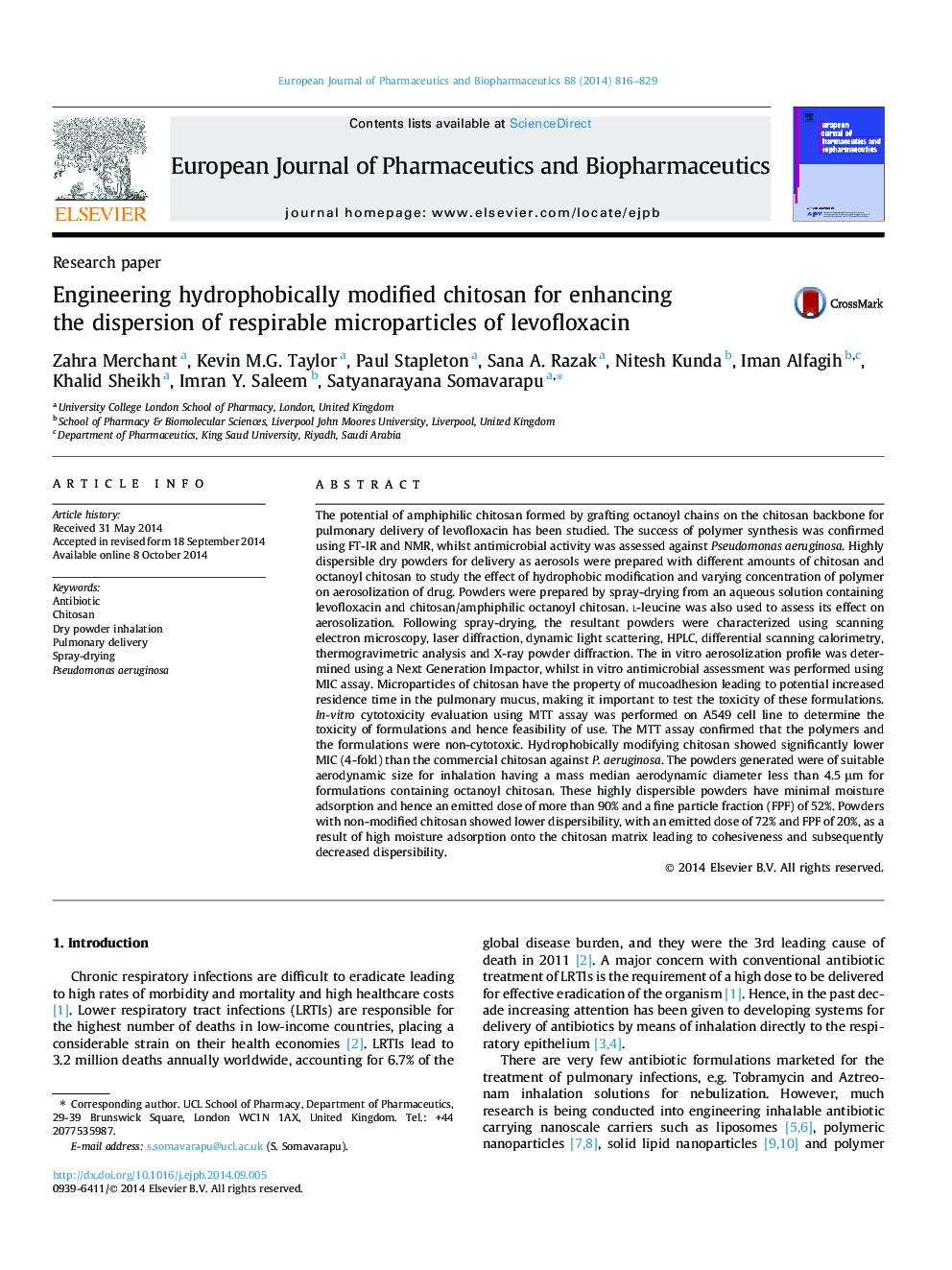| کد مقاله | کد نشریه | سال انتشار | مقاله انگلیسی | نسخه تمام متن |
|---|---|---|---|---|
| 2083519 | 1545337 | 2014 | 14 صفحه PDF | دانلود رایگان |
• We model and proved dispersion enhancing behaviour of hydrophobic modified chitosan.
• N,O-octanoyl chitosan was synthesized and showed an enhanced antimicrobial activity.
• Levofloxacin microparticles were prepared by spray-drying with N,O-octanoyl chitosan.
• Low amounts of hydrophobic chitosan led to increased pulmonary deposition of drug.
• Can serve as alternative dispersibility enhancer to hydrophobic amino acid leucine.
The potential of amphiphilic chitosan formed by grafting octanoyl chains on the chitosan backbone for pulmonary delivery of levofloxacin has been studied. The success of polymer synthesis was confirmed using FT-IR and NMR, whilst antimicrobial activity was assessed against Pseudomonas aeruginosa. Highly dispersible dry powders for delivery as aerosols were prepared with different amounts of chitosan and octanoyl chitosan to study the effect of hydrophobic modification and varying concentration of polymer on aerosolization of drug. Powders were prepared by spray-drying from an aqueous solution containing levofloxacin and chitosan/amphiphilic octanoyl chitosan. l-leucine was also used to assess its effect on aerosolization. Following spray-drying, the resultant powders were characterized using scanning electron microscopy, laser diffraction, dynamic light scattering, HPLC, differential scanning calorimetry, thermogravimetric analysis and X-ray powder diffraction. The in vitro aerosolization profile was determined using a Next Generation Impactor, whilst in vitro antimicrobial assessment was performed using MIC assay. Microparticles of chitosan have the property of mucoadhesion leading to potential increased residence time in the pulmonary mucus, making it important to test the toxicity of these formulations. In-vitro cytotoxicity evaluation using MTT assay was performed on A549 cell line to determine the toxicity of formulations and hence feasibility of use. The MTT assay confirmed that the polymers and the formulations were non-cytotoxic. Hydrophobically modifying chitosan showed significantly lower MIC (4-fold) than the commercial chitosan against P. aeruginosa. The powders generated were of suitable aerodynamic size for inhalation having a mass median aerodynamic diameter less than 4.5 μm for formulations containing octanoyl chitosan. These highly dispersible powders have minimal moisture adsorption and hence an emitted dose of more than 90% and a fine particle fraction (FPF) of 52%. Powders with non-modified chitosan showed lower dispersibility, with an emitted dose of 72% and FPF of 20%, as a result of high moisture adsorption onto the chitosan matrix leading to cohesiveness and subsequently decreased dispersibility.
Figure optionsDownload high-quality image (197 K)Download as PowerPoint slide
Journal: European Journal of Pharmaceutics and Biopharmaceutics - Volume 88, Issue 3, November 2014, Pages 816–829
